Daytona Beach, known for its stunning coastline, vibrant culture, and thrilling motorsports, attracts visitors year-round. One of the essential aspects for beachgoers, fishermen, and water sports enthusiasts is the sea temperature. This comprehensive article delves into the sea temperature trends in Daytona Beach, providing insights, local experiences, and tips for maximizing your time by the water.
Why Sea Temperature Matters
The sea temperature in Daytona Beach significantly affects various activities, from swimming and surfing to fishing and boating. Understanding sea temperature helps you choose the right gear and plan your activities accordingly.
Local Activities Influenced by Sea Temperature
- Swimming: Ideal sea temperatures for swimming range from 70°F to 78°F.
- Surfing: Surf enthusiasts prefer temperatures above 65°F.
- Fishing: Different fish species are available depending on the sea temperature.
- Boating: Comfortable water temperatures enhance the boating experience.
Sea Temperature Trends in Daytona Beach
The sea temperature around Daytona Beach fluctuates throughout the year, influenced by seasonal changes and local weather patterns. Below is a detailed month-by-month breakdown of average sea temperatures in Daytona Beach.
Monthly Sea Temperature Overview
| Month | Average Sea Temperature (°F) | Remarks |
|---|---|---|
| January | 62°F | Cool, suitable for only the brave. |
| February | 63°F | Still cool, but starting to rise. |
| March | 65°F | Beginning of spring, more comfortable. |
| April | 68°F | Great for swimming. |
| May | 73°F | Warm and inviting. |
| June | 79°F | Ideal for all water activities. |
| July | 82°F | Peak beach season! |
| August | 83°F | Hot and perfect for swimming. |
| September | 82°F | Warm, good for late-season beach visitors. |
| October | 78°F | Comfortably warm. |
| November | 73°F | Cooler weather begins. |
| December | 66°F | Colder, but still appealing for some. |
Trends and Observations
As illustrated in the table above, the sea temperature in Daytona Beach peaks during the summer months (July and August), making it the most favorable time for beach activities. The cooler months from December to February can deter casual beachgoers but are still suitable for those willing to brave the waters.
Factors Influencing Sea Temperature
The sea temperature is influenced by a variety of factors, including climate change, local weather patterns, and ocean currents. Understanding these can help you plan your beach outings more effectively.

Ocean Currents
The Gulf Stream, a warm ocean current, flows close to the coast of Daytona Beach. This current influences local sea temperatures, often keeping them warmer than other areas along the Atlantic coast.
Seasonal Variations
Daytona Beach experiences a subtropical climate, leading to significant seasonal variations in temperature. During summer, the combination of high air temperatures and warm ocean currents results in elevated sea temperatures, while winter conditions cool the waters significantly.
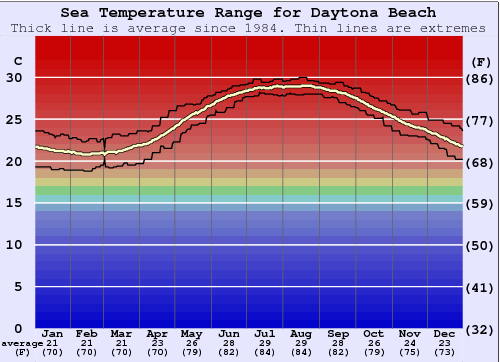
Best Methods to Monitor Sea Temperature
Accurate monitoring of sea temperature is crucial for both casual beachgoers and serious water enthusiasts. Below are some effective methods and technologies to keep you informed about sea conditions.
1. Online Weather Services
Online platforms provide real-time data on sea temperatures. Popular services include:
- NOAA (National Oceanic and Atmospheric Administration): Offers detailed ocean temperature data.
- Surfline: Great for surfers, providing live updates on sea conditions.
- Weather.com: Offers general weather forecasts, including sea temperatures.
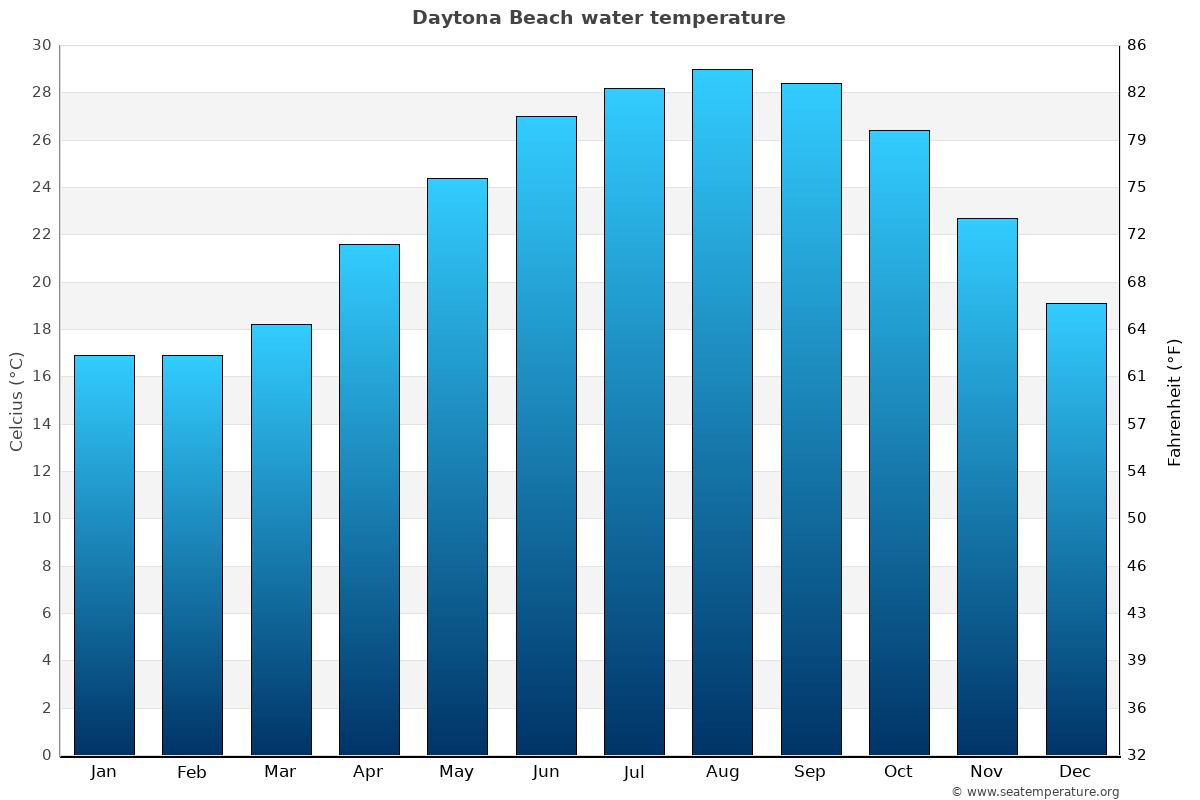
Pros and Cons of Online Weather Services
| Advantages | Disadvantages |
|---|---|
| Easy access to real-time data | Information can sometimes be outdated |
| Wide range of resources | Variability in data accuracy |
2. Mobile Apps
There are numerous mobile apps designed to keep you updated on local sea temperatures. Some of the most popular include:
- Windy: Provides accurate sea temperatures and forecasts.
- Buoyweather: Offers localized data, including sea surface temperatures.
- My Tide Times: Gives tidal information along with sea temperatures.
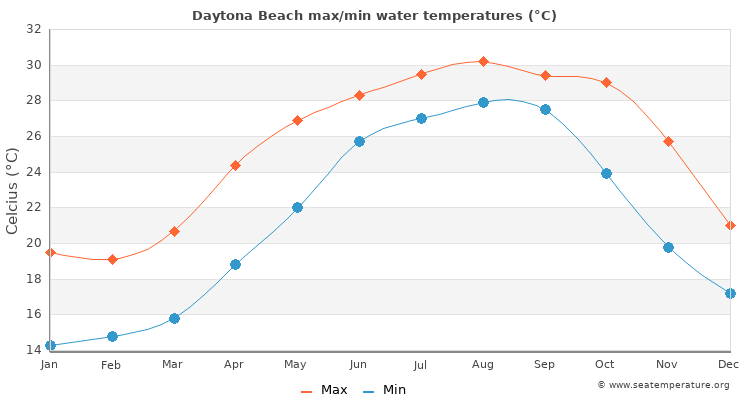
Pros and Cons of Mobile Apps
| Advantages | Disadvantages |
|---|---|
| Convenient access on-the-go | Data may vary based on location |
| Customizable alerts | May require subscriptions for premium features |
3. Local Beach Amenities
Many beach clubs and resorts along Daytona Beach often provide sea temperature data for visitors. This is helpful for tourists who are looking for local insights.
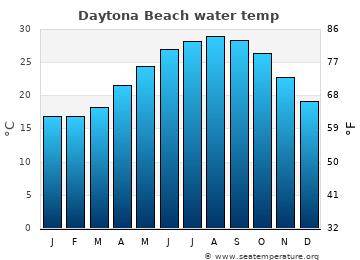
Pros and Cons of Local Beach Amenities
| Advantages | Disadvantages |
|---|---|
| Localized, reliable information | Limited to certain areas |
| Accessible while visiting | May not be updated in real-time |
Local Experiences and Cultural Insights
Daytona Beach is more than just its sea temperatures. Embracing local culture can enhance your coastal experience significantly!
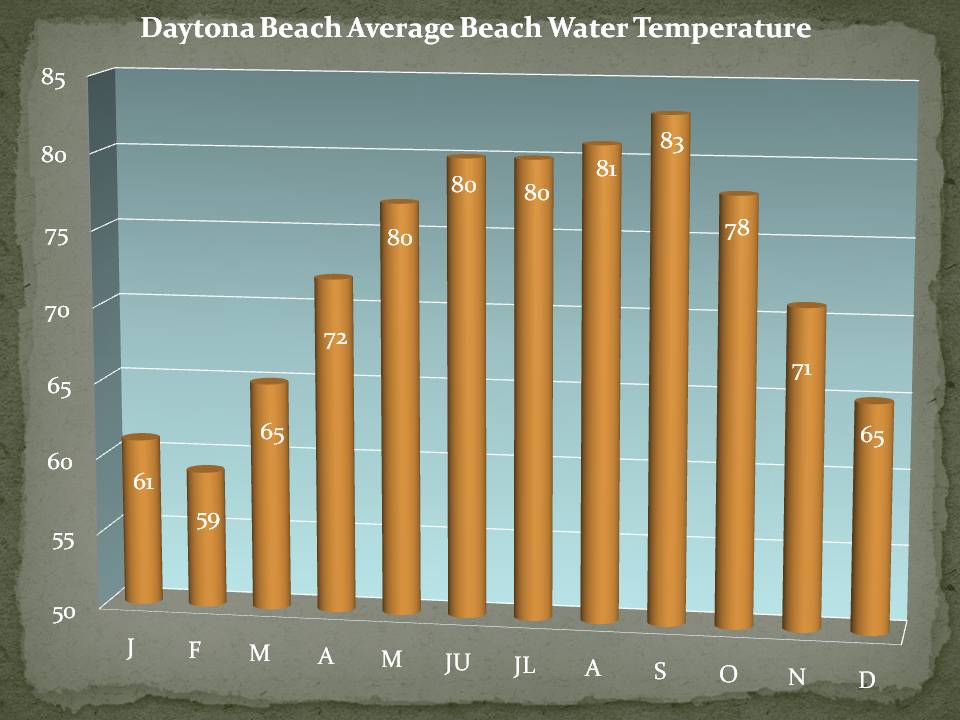
Events and Festivals
Throughout the year, Daytona Beach hosts various events that celebrate the local culture, many of which are influenced by the warm sea temperatures. Events like the Daytona Beach Music Festival and the Daytona Beach Half Marathon draw large crowds during the warmer months.
Unique Dining Experiences
Craving seafood? Daytona Beach offers an array of dining options with ocean views, such as:
- Ocean Deck: A beachside restaurant famous for its fresh seafood and live music.
- Boondocks Restaurant: Known for its unique dishes and proximity to the water.
Dining on fresh catch while enjoying a warm evening by the sea creates unforgettable memories.
Frequently Asked Questions (FAQs)
What is the best time of year for swimming in Daytona Beach?
The best time for swimming in Daytona Beach is from late May to early September when the sea temperature averages between 73°F and 83°F.
How do sea temperatures affect fishing in Daytona Beach?
Different fish species thrive in various temperatures. Warmer waters in summer attract species like tarpon and snapper, while cooler months may offer opportunities for species like flounder.
Where can I find the most accurate sea temperature data for Daytona Beach?
For real-time sea temperature data, NOAA and local surf reports provide reliable information.
Can sea temperatures change rapidly in Daytona Beach?
Yes, sea temperatures can change due to weather conditions, ocean currents, and tidal movements, so it’s essential to check them regularly before planning your day by the beach.
Conclusion
Understanding sea temperature in Daytona Beach is crucial for maximizing your coastal experience. From planning the perfect swimming trip to indulging in local seafood, being informed will enhance your enjoyment of this vibrant destination. Whether you’re a first-time visitor or a seasoned local, there’s always something new to discover in Daytona Beach!
For further reading and detailed sea temperature data, you can check these sources: